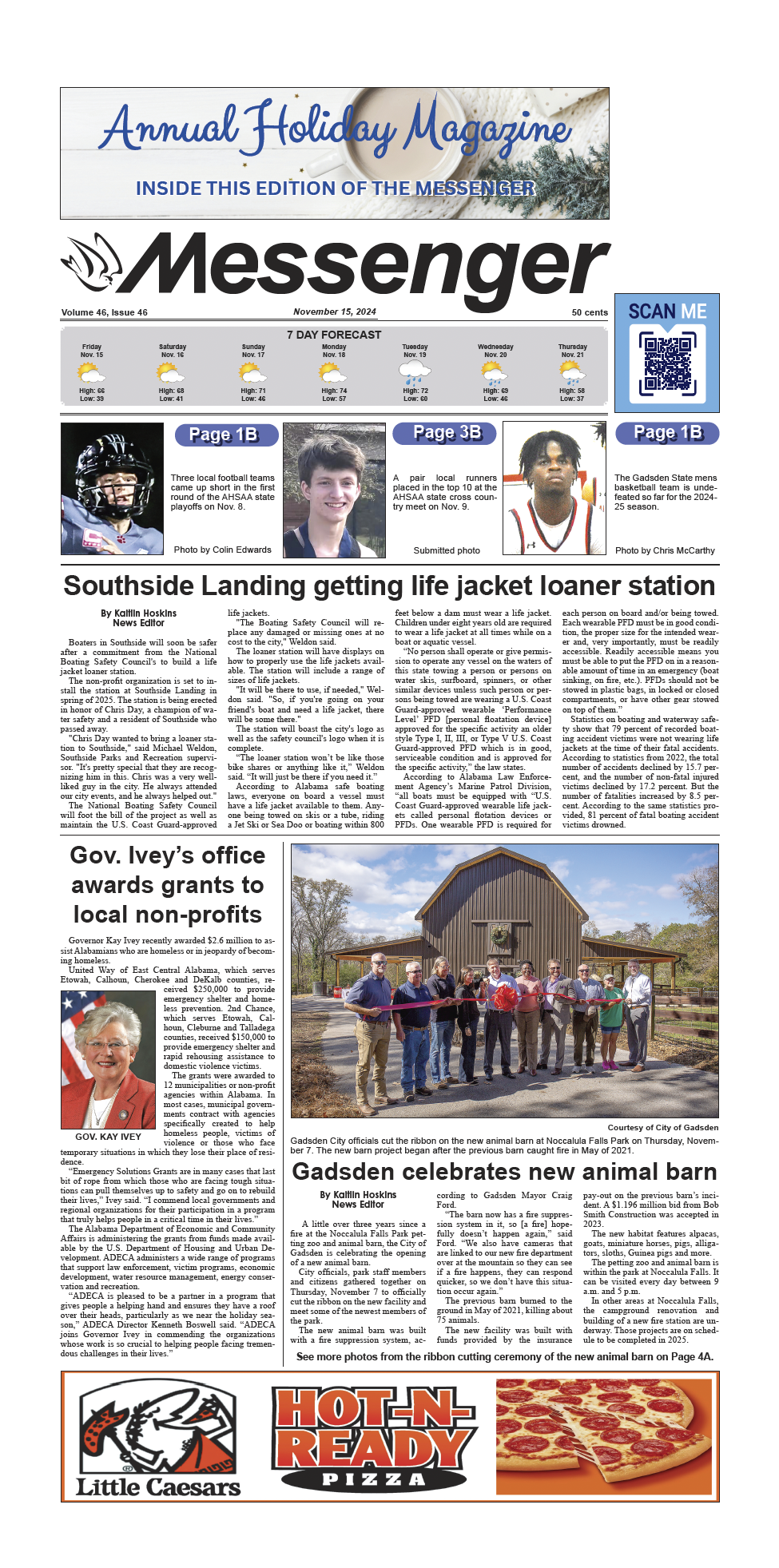By Sarrah Peters, News Editor
On Thursday, February 15, the Gadsden Public Library hosted “Quilt Talk: Secret Slave Codes in Quilts” as part of its observance of Black History Month to celebrate the contributions that African-Americans have made to the nations history and culture.
Founder and Executive Director of the Grace Heritage Foundation for Southern Hills Cemetery Chari Bostick spoke to a room full of people about how slaves would use quilting patterns to communicate about the Underground Railroad without alerting slave owners.
Bostick also displayed about 10 quilts, some of which were borrowed for the event. Others, however, had been donated to Bostick’s foundation and were over a 100 years old.
House slaves who cooked, cleaned, cared for children and sewed would hear information while in the house and relay the messages to slaves in the fields.
The slaves would use quilts for communication because many slaves did not know how to read or write. Slaves gave meanings to already utilized quilting patterns; and since airing quilts outside was a common practice, slaves were able to communicate privately without raising the slave-owners’ suspicions.
Bostick detailed several patterns’ meanings at the lecture and showed what the paterns looked like through pictures and the quilts on display.
Some patterns indicated direction, like the Northern or Bavarian Star, which told slaves to look for and follow the North Star.
Some told slaves how to they would travel. The Sailboats pattern indicated that slaves would travel by boat, while the Wagon Wheel pattern indicated that slaves would travel hidden in wagons.
Others gave instructions on how to travel. The Flying Geese pattern told slaves to escape to travel through woods over which geese were flying overhead to mask any noise. The Drunkard’s Path pattern told slaves not to take the same path twice. The Bear’s Paw block instructed slaves to follow bear tracks they saw in order to find food and water.
The Shoe Fly pattern indicated that a guide was nearby and that slaves could trust a person. The Log Cabin pattern indicated that slaves should seek shelter. The Bow Tie pattern told slaves to dress appropriately so they did not resemble look like the runaway slaves that they were.
Bostick had attendees create their own pattern combinations to convey messages.
After the lecture, attendees took a closer look at the displayed quilts and enjoyed refreshments.




